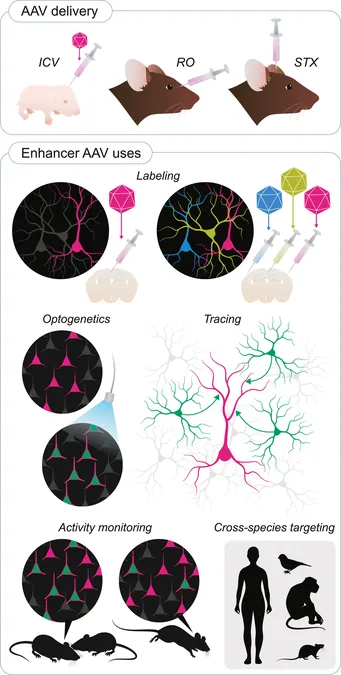
Revolutionizing Brain Therapy: Breakthrough Gene Delivery Systems Unveiled!
2025-05-22
Author: Nur
A Game-Changer for Neural Health
Imagine a future where brain disorders are not just treated, but precisely targeted at the molecular level. Researchers have unveiled a groundbreaking set of gene delivery systems designed to reach various neural cell types in the human brain and spinal cord with astounding accuracy. This innovation paves the way for advanced gene therapies that can effectively manage erratic brain activity, moving beyond the realm of mere symptom relief.
Targeted Precision: Transforming Neural Circuit Studies
These state-of-the-art delivery systems are engineered to carry genetic material directly into specific cell types within the brain and spinal cord. By offering this targeted approach, scientists can revolutionize the study of neural circuits, enabling vital research without relying on genetically modified animals. Researchers can now illuminate the intricate structures of brain cells with fluorescent proteins or manipulate neuronal circuits that influence behavior and cognition.
The Delivery Truck Analogy: A New Era of Discoveries
John Ngai, Director of NIH's BRAIN Initiative, likens this innovative system to a delivery truck distributing specialized genetic packages to designated neighborhoods in the brain and spinal cord. This new access allows researchers to interact with and manipulate specific cell types in ways previously thought impossible.
Broad Applications Across Species
Utilizing a small, modified adeno-associated virus (AAV), these innovative tools can deliver DNA across a variety of species and experimental setups, including small tissue samples from human brain surgeries. This versatility is crucial for advancing our understanding of the brain by validating the delivery systems in fully intact living organisms.
Unprecedented Targeting Capabilities
The newly developed toolkit comprises an array of delivery systems that specifically target critical brain cell types: excitatory neurons, inhibitory interneurons, and even the elusive neurons in the spinal cord linked to movement control, often damaged in diseases like ALS. Each of these advances holds great potential for detailed research into neurological conditions.
Harnessing AI for Genetic Discovery
This toolkit also leverages cutting-edge AI technologies to identify genetic "light switches"—enhancers that activate genes in particular brain cell types. By analyzing data from various species, this AI integration substantially reduces the time and effort scientists spend hunting for these crucial genetic switches.
Unlocking New Pathways in Neurological Research
This comprehensive collection of research tools is set to dramatically enhance our understanding of the human brain, particularly in regions vital to decision-making, like the prefrontal cortex. With these resources, scientists gain unparalleled insight into individual cells and communication pathways affected in numerous neurological diseases—spanning seizure disorders to Alzheimer's and beyond.
A New Dawn for Targeted Therapies
Already, AAV-based treatments, like the 2016 gene therapy Zolgensma for spinal muscular atrophy, have transformed lives, allowing children facing severe disabilities to thrive. This latest toolkit lays the foundation for even more targeted therapies, honing in on the specific cells impacted within the brain and spinal cord.
Accessible Tools for Researchers Everywhere
For the scientific community, this collection is a treasure trove. Available for distribution through centers like Addgene, the toolkit comes complete with standard operating procedures and user guides, ensuring researchers are well-equipped to tap into these transformative resources for the betterment of neurological health.

 Brasil (PT)
Brasil (PT)
 Canada (EN)
Canada (EN)
 Chile (ES)
Chile (ES)
 Česko (CS)
Česko (CS)
 대한민국 (KO)
대한민국 (KO)
 España (ES)
España (ES)
 France (FR)
France (FR)
 Hong Kong (EN)
Hong Kong (EN)
 Italia (IT)
Italia (IT)
 日本 (JA)
日本 (JA)
 Magyarország (HU)
Magyarország (HU)
 Norge (NO)
Norge (NO)
 Polska (PL)
Polska (PL)
 Schweiz (DE)
Schweiz (DE)
 Singapore (EN)
Singapore (EN)
 Sverige (SV)
Sverige (SV)
 Suomi (FI)
Suomi (FI)
 Türkiye (TR)
Türkiye (TR)
 الإمارات العربية المتحدة (AR)
الإمارات العربية المتحدة (AR)